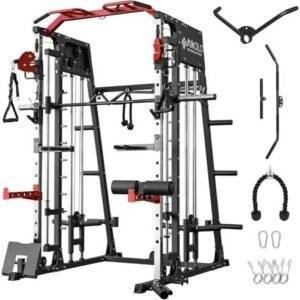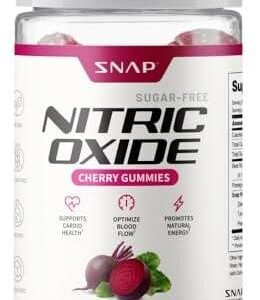Introduction: A
In the realm of fitness and health, cardiovascular training stands as a cornerstone of physical well-being, promoting not only improved heart health but also enhanced endurance, weight management, and overall vitality. As the prevalence of sedentary lifestyles rises, the necessity for structured and effective cardiovascular programs has never been more critical. This comprehensive guide aims to demystify cardiovascular training by providing detailed insights into the various modalities, methodologies, and best practices tailored for individuals at all fitness levels.
Commencing with an exploration of the physiological benefits of cardiovascular exercise, we will examine how such training directly contributes to cardiovascular health, metabolic function, and mental clarity. Following this foundational understanding, the guide will delve into the diverse spectrum of cardiovascular training activities—ranging from traditional running and cycling to innovative high-intensity interval training (HIIT) and low-impact modalities like swimming and rowing. Each method will be evaluated in terms of its efficacy, accessibility, and suitability for different demographics, ensuring that readers can make informed decisions that align with their personal goals and physical conditions.
Moreover, we will outline essential principles of program design, such as frequency, intensity, time, and type (the FITT framework), equipping readers with the tools to create tailor-made training regimes that maximize benefits and minimize the risk of injury. Additionally, we will address common misconceptions, offer tips on overcoming psychological barriers to training, and discuss the importance of recovery and nutrition in supporting cardiovascular health.
Ultimately, this guide seeks to empower individuals to embrace cardiovascular exercise as an essential component of a holistic approach to fitness, emphasizing sustainability, enjoyment, and lifelong adherence to active living. Engaging with this resource will not only enhance your understanding of effective cardiovascular training but also inspire you to embark on a transformative journey towards a healthier, more vigorous life.
Table of Contents
- Understanding the Physiology of Cardiovascular Exercise and Its Impact on Health
- Designing Tailored Cardiovascular Training Regimens for Optimal Performance
- Integrating Cross-Training Techniques to Enhance Cardiovascular Endurance
- Monitoring Progress and Adjusting Training Strategies for Continuous Improvement
- In Retrospect
Understanding the Physiology of Cardiovascular Exercise and Its Impact on Health
Cardiovascular exercise is pivotal for enhancing overall health and well-being, primarily through its influence on the body’s physiological responses. During aerobic activity, the heart rate increases, allowing for an augmented flow of oxygen-rich blood to the muscles. This process not only improves cardiovascular efficiency but also strengthens the heart muscle itself. Some key physiological changes that occur with regular cardiovascular training include:
- Increased Stroke Volume: With consistent training, the heart pumps more efficiently, delivering more blood per beat.
- Improved Oxygen Uptake (VO2 Max): Enhanced ability of the body to utilize oxygen, indicating higher aerobic capacity.
- Enhanced Capillary Density: More capillaries develop in muscles, promoting better nutrient and waste exchange.
- Lower Resting Heart Rate: A sign of improved cardiovascular fitness, resulting from increased heart efficiency.
The benefits of these physiological adaptations extend beyond immediate performance improvements. Regular cardiovascular exercise contributes significantly to the prevention of chronic diseases, such as heart disease, hypertension, and diabetes. These adaptations also play a crucial role in weight management and mental health, as they facilitate the release of endorphins, which can alleviate stress and enhance mood. The table below illustrates the long-term impacts of consistent cardiovascular training on various health markers:
| Health Marker | Before Training | After 6 Months Training |
|---|---|---|
| Resting Heart Rate (BPM) | 80 | 68 |
| Blood Pressure (mm Hg) | 130/85 | 120/80 |
| Body Fat Percentage | 25% | 20% |
| VO2 Max (ml/kg/min) | 30 | 42 |
Designing Tailored Cardiovascular Training Regimens for Optimal Performance
Creating an effective cardiovascular training regimen requires a deep understanding of individual fitness levels, goals, and preferences. Each program should focus on specific cardiovascular modalities that align with the athlete’s needs. Key aspects to consider include:
- Fitness Assessment: Conduct a thorough evaluation of the individual’s current cardiovascular fitness through VO2 max testing or submaximal tests.
- Goal Setting: Define clear, measurable objectives such as improving endurance, increasing speed, or weight management.
- Training Variety: Incorporate a mix of steady-state and interval training to enhance both aerobic and anaerobic capacity, preventing monotony and promoting engagement.
Furthermore, the design of these regimens should also factor in recovery protocols and nutrition to support performance gains. A well-rounded program might include:
| Training Component | Frequency | Intensity |
|---|---|---|
| Long Slow Distance (LSD) | 1-2 times/week | Low to Moderate |
| High-Intensity Interval Training (HIIT) | 1-2 times/week | High |
| Active Recovery | 1-2 times/week | Light |
This holistic approach ensures a balance between intensity, duration, and recovery, ultimately leading to optimal cardiovascular performance while minimizing the risk of injury and burnout.
Integrating Cross-Training Techniques to Enhance Cardiovascular Endurance
Integrating cross-training techniques into your cardiovascular endurance regimen not only ensures a balanced workout but also mitigates the risk of injury by diversifying the stress placed on your muscles and joints. By incorporating a variety of activities, you can target different muscle groups and maintain motivation through fresh and engaging workouts. Popular cross-training activities include:
- Cycling: Provides a low-impact alternative that builds stamina while reducing strain on the joints.
- Swimming: Offers a full-body workout that improves cardiovascular health and enhances muscle tone without the impact of running.
- Rowing: Engages both upper and lower body muscles, providing an excellent cardiovascular workout that also strengthens the core.
- HIIT (High-Intensity Interval Training): Promotes increased endurance and fat-burning potential in a shorter time frame.
To effectively integrate these techniques, it’s essential to devise a structured training schedule that maintains your cardiovascular focus while incorporating varied activities. A possible weekly plan could resemble the following:
| Day | Activity | Duration |
|---|---|---|
| Monday | Cycling | 45 minutes |
| Tuesday | HIIT Workout | 30 minutes |
| Wednesday | Swimming | 30 minutes |
| Thursday | Rest/Light Stretching | – |
| Friday | Rowing | 45 minutes |
| Saturday | Long Run | 60 minutes |
| Sunday | Rest | – |
This balanced approach helps build cardiovascular endurance while minimizing the risk of overuse injuries, ensuring optimal performance in your primary fitness activities.
Monitoring Progress and Adjusting Training Strategies for Continuous Improvement
Monitoring your cardiovascular training progress is crucial for achieving effective results. Implementing a structured system allows you to identify trends, areas for improvement, and the effectiveness of your current training strategies. Regularly tracking metrics such as heart rate, duration of workouts, and perceived exertion can provide valuable insights. Consider utilizing the following methods for tracking:
- Wearable Technology: Devices such as heart rate monitors and fitness trackers offer real-time data that can help gauge your intensity and endurance.
- Logbooks: Keep a detailed log of your workouts, including distance, time, and any changes in your physical condition.
- Periodic Assessments: Conduct routine fitness assessments or time trials to objectively measure progress over time.
Adapting your training regimen based on the data collected is essential for continuous improvement. After analyzing your progress, consider these adjustments to optimize your workout strategy:
- Varying Intensity: Incorporate a mix of high-intensity intervals and steady-state workouts to challenge your cardiovascular system.
- Progressive Overload: Gradually increase the duration or intensity of your sessions to avoid plateaus and ensure ongoing improvement.
- Recovery Integration: Focus on recovery techniques such as active rest days and cross-training to prevent burnout and injuries.
| Monitoring Method | Benefits |
|---|---|
| Wearable Technology | Provides real-time data and analysis of performance. |
| Logbooks | Offers a tangible record of progress and patterns. |
| Periodic Assessments | Helps in setting new goals and adjusting strategies. |
In Retrospect
an effective cardiovascular training program is not merely a checklist of exercises but a holistic approach that integrates individual goals, fitness levels, and preferences. As we’ve explored throughout this guide, the key to successful cardiovascular training lies in understanding the principles of intensity, duration, frequency, and variety, while also prioritizing safety and recovery.
Whether your aim is to enhance endurance, improve heart health, or facilitate weight management, a tailored cardiovascular plan allows for adaptability and growth. We’ve emphasized the importance of cross-training, the use of technology for tracking progress, and the value of listening to your body to mitigate the risk of injuries and promote sustainability.
As you embark on your cardiovascular journey, remember that consistency is paramount. Stay informed by educating yourself on new fitness trends and research, and don’t hesitate to seek guidance from certified fitness professionals. By doing so, you will not only enhance your physical well-being but also cultivate a lasting relationship with fitness that benefits your overall quality of life.
In a world where health and wellness are increasingly prioritized, a well-structured cardiovascular training program stands as a pillar of personal fitness. Embrace the principles laid out in this guide, and empower yourself to achieve – and maintain – your cardiovascular goals for years to come. Here’s to your commitment to a healthier, fitter future.





